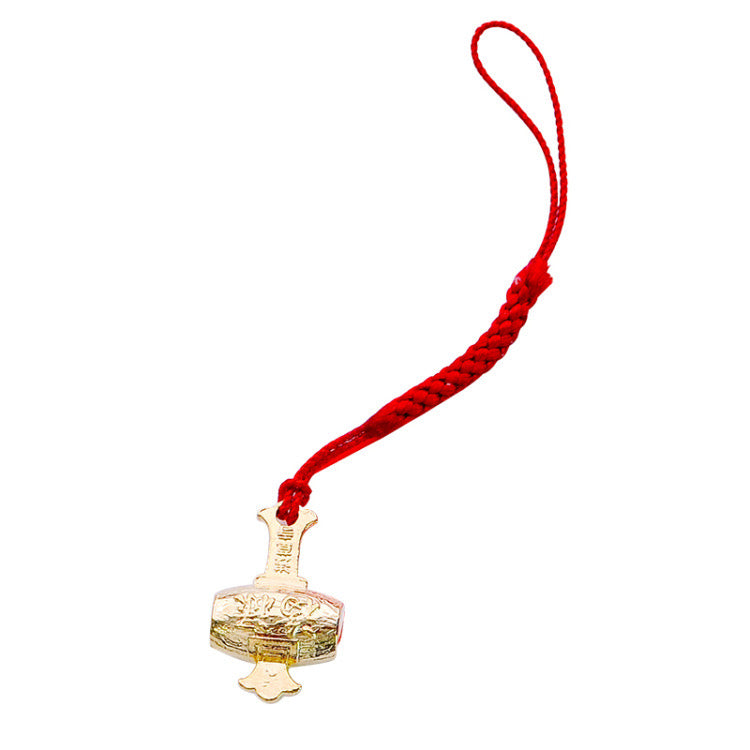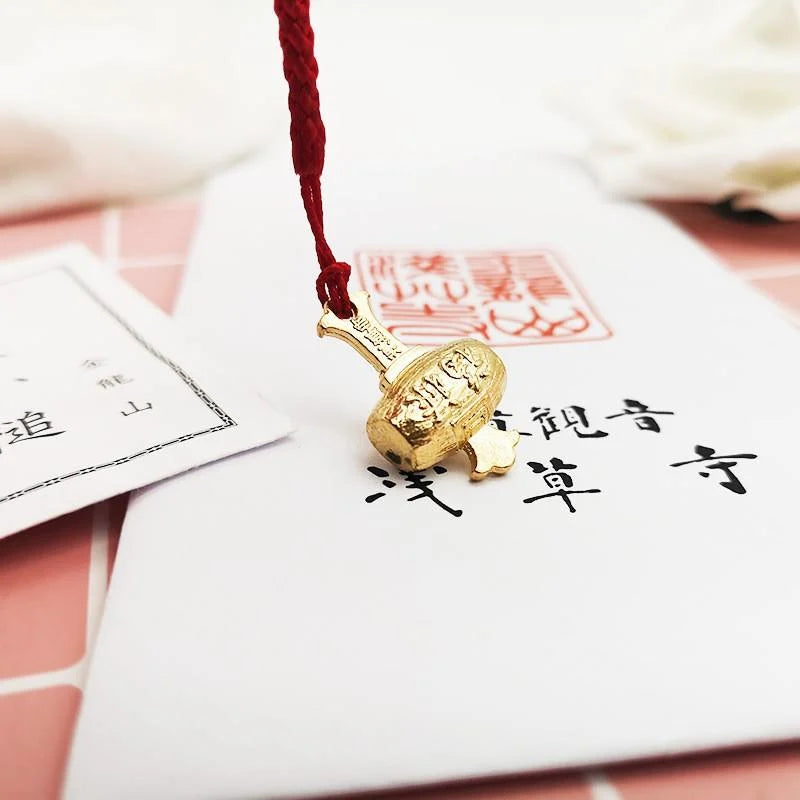Sensō-ji
Tokyo Sensoji Temple Omamori【Lucky Hammer】Charm Amulet for Lucky Money
Couldn't load pickup availability
[福禄小槌] 【Lucky Hammer】,Charm Amulet for Lucky Money.
Carry it with you or keep it in your wallet.

Early in the morning on March 18, 628, when the capital of Japan was in Asuka, in what is now a part of Nara Prefecture, Hinokuma Hamanari and his brother Takenari were fishing in the Sumida River. Bringing in their net, they were surprised to see that it held one statue . When Haji no Nakatomo, village headman of what is now Asakusa, realized what they had was a statue of Avalokitesvara Bodhisattva (Sho Kanzeon Bosatsu),Kannon called usually.he devoted himself to Buddhism. He remade his house into a temple soon and devoted the rest of his life to worship and holding memorial services for this Kannon.
In 645, a Buddhist priest named Shokai came to this region and built a hall for the Kannon. Following a revelation he received in a dream, Shokai decided to hide the statue from view. Since that time, it has remained never unveiled.
Asakusa at the time was a small fishing village located in an estuary of Tokyo Bay in the vast wilderness of the area known as Musashino. It grew and flourished as people arrived in increasing numbers to worship. When Ennin (794-864), head priest of Enryaku-ji (the main temple of the Tendai School of Buddhism) visited Senso-ji in the mid-ninth century, he created a statue identical to the main image (absolutely Hibutsu) so that it could be shown rarely to the public.
During the Kamakura Period (1185-1333), the Shoguns demonstrated great devotion to Senso-ji. Gradually, other prominent figures, including military leaders and literati, followed their example, and the temple’s importance increased. In 1590 Tokugawa Ieyasu, the first Tokugawa Shogun, designated Senso-ji as the temple where prayers of the shogunate would be offered. After that the successive Tokugawa Shoguns had often visited Senso-ji and the belief in Kannnon of the Senso-ji had spread among common people during the Edo Period(1603-1867).
As from the end of the 18th century through the 19th century Edo city developed into the largest population city in the world , the culture specific to Edo flowered and Asakusa had become the cultural center in Edo.
In the modern times Asakusa has been the popular culture center such as theater,movie,music and vaudeville.
Senso-ji is the oldest temple in Tokyo and also called Asakusa Kannon because it houses the Kannon, It is known throughout Japan. This important center of worship draws 30 million visitors every year.









